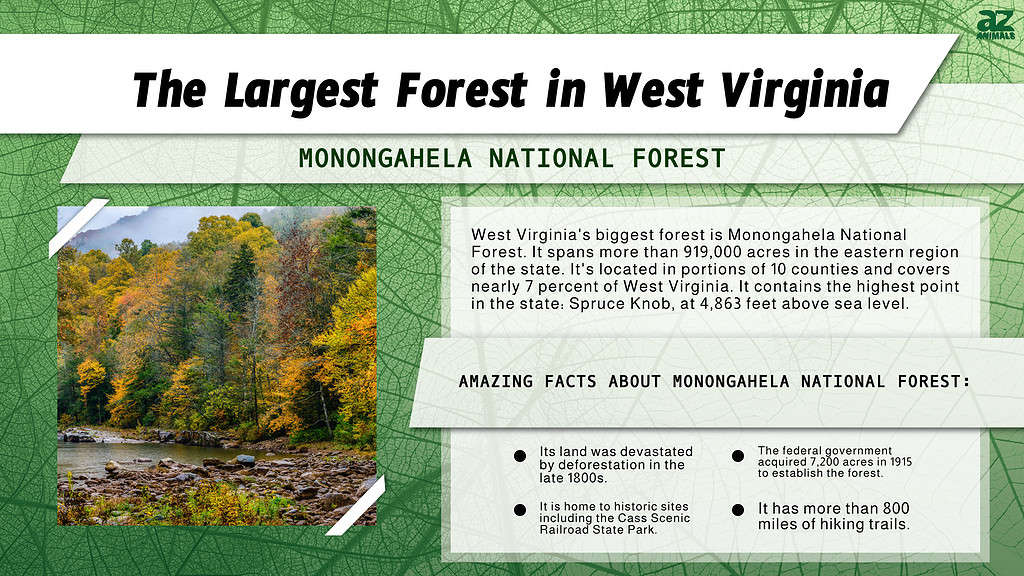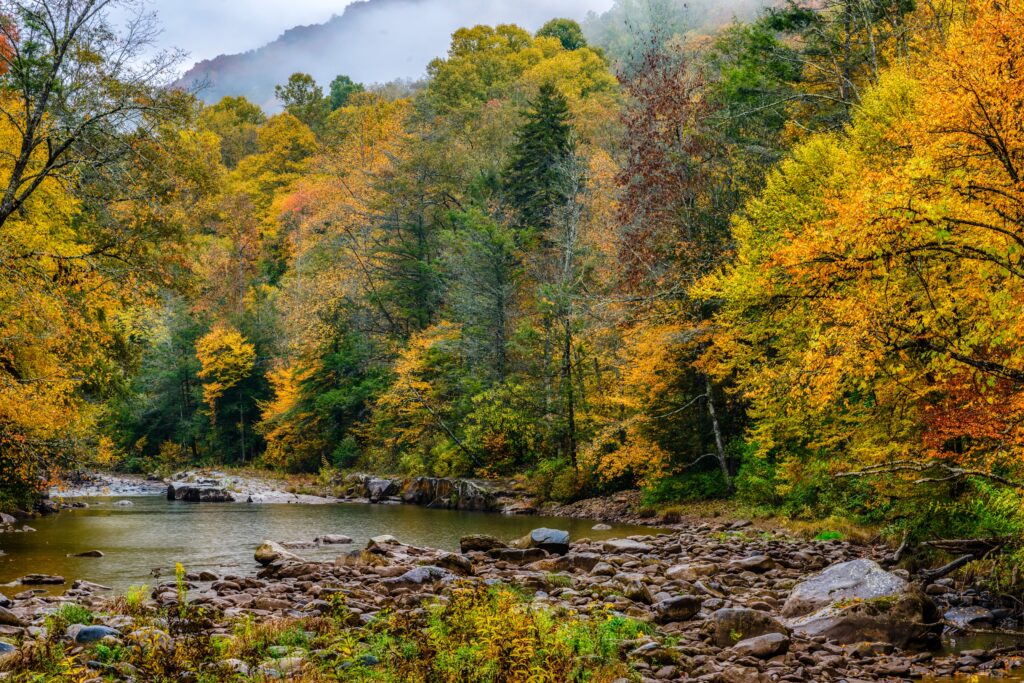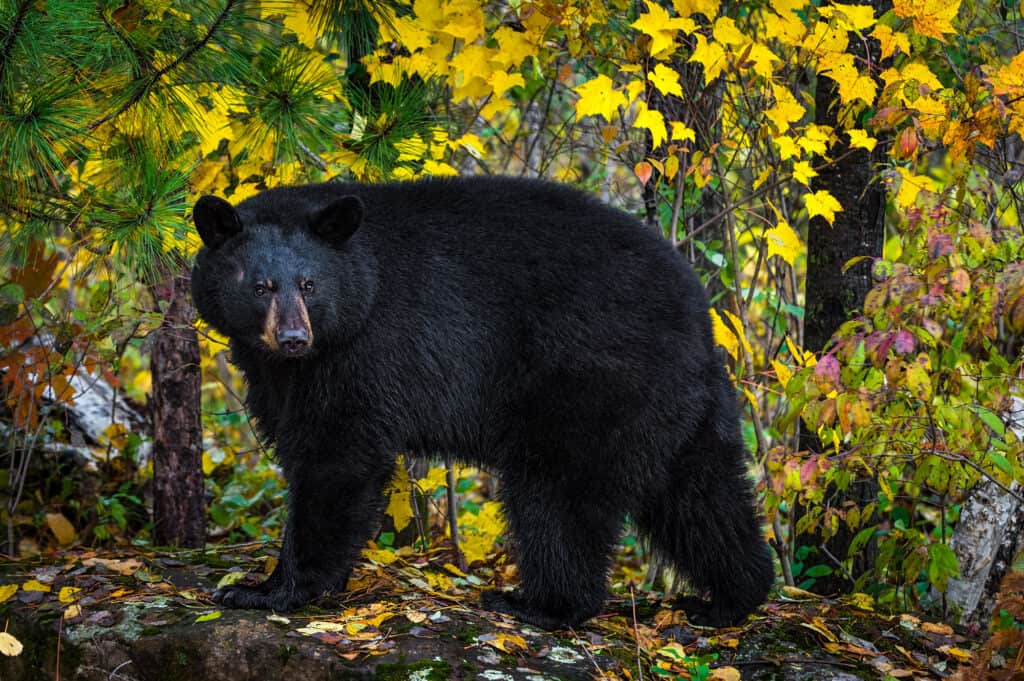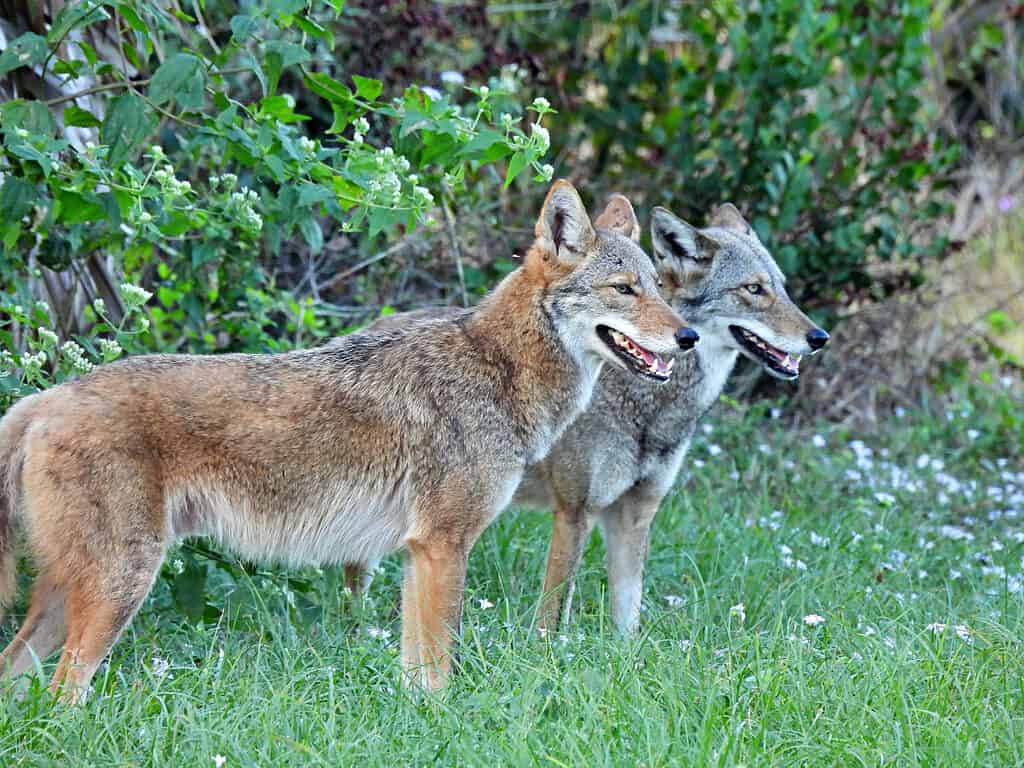There are several extensive forests throughout the state of West Virginia that span more than 12 million acres of hilly terrain. With 78% of West Virginia covered, the state has earned the title of the third most forested state in the U.S.
Monongahela National Forest is the largest forest in West Virginia and is home to tons of stunning wildlife and natural wonders. The wildlife found here loves the forests, mountains, streams, and rivers that the forest provides. Monongahela National Forest also offers spectacular hiking and camping for those that love to be outdoors!

The Largest Forest in West Virginia: Monongahela National Forest
Monongahela National Forest is the largest forest in West Virginia and spans over 919,000 acres in the eastern region of the state. The forest also includes the highest point in the entire state, Spruce Knob, at 4,863 feet above sea level. Contained within is a diverse range of habitats spread throughout the forest, including mountains, valleys, streams, and rivers. Many different animals call this forest home, and plenty of recreational opportunities are available, such as hunting, fishing, camping, and many others.
This massive forest is located in portions of 10 different counties and covers nearly 7 percent of the entire state!

Monongahela National Forest covers more than 919,000 acres.
©Malachi Jacobs/Shutterstock.com
Where Is Monongahela National Forest Located on a Map?
Monongahela National Forest is located directly to the north of Nottingham and is 5.1 miles away from it. The nature reserve can be reached following a 13-minute drive, a 41-minute bicycle ride, or a 1-hour 49-minute walk.
History of Monongahela National Forest
Monongahela National Forest was established in 1911 following the Weeks Act passage. This act allowed the purchase of land by the federal government for watershed protection and natural resource management. The natural area that is now the Monongahela National Forest was devastated by deforestation from the logging industry in the late 1800s. Between 1850 and 1910, more than 190 million acres were cleared around the country, which is nearly 8% of the total land in the U.S.!
Following this period of deregulation, the federal government took action to protect the ecosystem. In 1915, the “Monongahela Purchase” was made, and 7,200 acres were acquired in eastern West Virginia to establish the forest. In 1920, the forest became known as the Monongahela National Forest.
The forest is also home to several historic sites, including the Cass Scenic Railroad State Park. This place offers a historic steam-powered train ride through the forest, where visitors can see views of the mountains and valleys. So if you don’t feel like walking for the views, this one is for you!
Hiking and Camping in Monongahela National Forest
Monongahela National Forest is a popular tourist attraction and hosts around 3 million visitors annually. The forest road and trail system is great for hiking, mountain biking, and horse riding. More than 800 miles of different hiking trails traverse the forest’s diverse landscape and vary in difficulty, from beginner all the way through to strenuous. There are 23 campgrounds available to have a great camping trip in this amazing forest.
Not only are the views of the rolling hills and trees amazing here in the forest but there are plenty of other activities to do while you are here. Some of these activities include boating, fishing, tubing, and rock climbing. There is something here for everyone to enjoy!
Here are some of the most popular hiking trails in the Monongahela National Forest:
Seneca Creek Trail
This trail is just over 10 miles long and follows the beautiful Seneca Creek. It passes through forests, waterfalls, and rocky terrain. This trail offers a stunning view of the forest and a chance to experience the picturesque landscape within the Monongahela National Forest.
Cranberry Wilderness Area Trails
These are a vast network of trails that comprises of nine different trails including the North Fork Mountain Trail. This trail is a 24-mile-long hike that offers beautiful views of the surrounding mountains. The Laurel Fork Trail is also a part of this network of trails and is 14 miles long. It will have you traversing through streams and dense forests.
Huckleberry Trail
The Huckleberry Trail is a 5.3-mile-long trek that passes through a wide range of habitats, including grasslands, forests, and wetlands. It’s perfect if you want to see a lot of different species in their unique habitats.
Blackbird Knob Trail
The Blackbird Knob Trail is a popular and moderately challenging 8.5-mile there-and-back trail that is perfect for backpacking, bird-watching, and camping. From the summit of Blackbird Knob, you will be able to enjoy panoramic views of the surrounding landscape including the wilderness and mountains.

Monongahela National Forest offers more than 800 miles of different hiking trails across the area’s diverse landscape.
©iStock.com/ablokhin
Wildlife in Monongahela National Forest
There is a huge variety of wildlife in Monongahela National Forest. The forest provides an ideal home to countless insects, birds, and mammals. The landscape of the Monongahela National Forest and the protection it provides from urban environments make this forest a haven for many species. Here are some of the common wildlife found in Monongahela National Forest.
White-Tailed Deer
The white-tailed deer is the most common species of deer found in the Monongahela National Forest. The deer are medium-sized and usually weigh from 100 to 300 pounds and are easily identified due to their white tails. They are herbivorous animals and feast on various plant life and vegetation, including grass, leaves, and twigs.
The white-tailed deer is an integral part of the forest’s ecosystem and food chain and are prey to black bears and coyotes. They are also important game animals, but while hunting is allowed within the forest, it is closely regulated to ensure the deer maintain a sustainable population.
Black Bears
The black bear is a medium-sized bear that is endemic to North America and is found in Monongahela National Forest. Although the name of the bear suggests that they have black fur, black bears can show a large variety of colors. In fact, you can even find white, blonde, and light brown colored black bears! Adult males generally weigh around 262 pounds while adult females weigh around 148 pounds.
Black bears are omnivores, and what they feed on depends on the seasons and location. Their diet generally consists of berries, fruit, insects, fish, and more.
The conservation status for the black bear is marked as Least Concern. In fact, the black bear is the most common species of bear in the U.S. and is typically found in forested areas, such as the Monongahela National Forest. There are around 12,000-14,000 black bears in West Virginia, so you may encounter a few on your trip to the Monongahela National Forest.

The black bear is the most common species of bear in the U.S. and is typically found in forested areas.
©Holly Kuchera/Shutterstock.com
Red Foxes
Other common species found in the Monongahela National Forest are red foxes, which are very well adapted to forested areas. Considered to be small to medium-sized mammals, they typically weigh between 8 and 15 pounds. They have a reddish-orange coat with a white chest and a bushy tail with a white tip.
Red foxes are omnivorous and will eat a variety of foods, including other small mammals, birds, insects, fruits, and berries. The predators of the red fox in the Monongahela National Forest include coyotes, bobcats, and even some birds, such as eagles and hawks. It may be difficult to see any red foxes while you are there, especially during the day, as they are solitary and nocturnal animals.
Wild Turkeys
West Virginia has an estimated population of 130,000 to 170,000 wild turkeys. These birds are native to North America. Adult males generally weigh from 11 to 24 pounds, while adult females weigh from 5.5 to 11.9 pounds. They have long legs and are feathered; males have much brighter feather colors, while females have duller shades. Despite their weight, wild turkeys are actually agile and fast fliers!
Wild turkeys like to live in forests with scattered openings and can adapt to any dense native plant community. These birds are omnivorous and eat acorns, nuts, hazel, chestnut, berries, roots, insects, and more. Because of their ability to forage for different types of food, wild turkey populations can reach large numbers. The Monongahela National Forest provides wild turkeys with a great home, and you will most likely spot some on your visit.
Coyotes
Being one of the primary predators in the forest, there is an ample supply of prey to support this animal. Coyotes are medium-sized wild canines that are native to North America. They typically weigh between 20 and 50 pounds and have grayish-brown fur with a bushy tail.
Coyotes are opportunistic feeders, meaning they will eat pretty much anything that is available. Depending on their environment, coyotes will eat other animals, fruits, and even rotting carcasses. Being primarily nocturnal, they are usually out and about during the night but are also known to be quite active during the daytime, especially in areas where there are fewer humans to disturb them. Coyotes are considered game animals, but as with most animals in the forest, there are rules and regulations in place when it comes to hunting or trapping the animal.

Coyotes are one of the primary predators found in the Monongahela National Forest.
©iStock.com/passion4nature
Skunks
There are four different species of skunk found in North America, with the striped skunk being the most common in the Monongahela National Forest. The skunks are most famously known for their ability to spray a foul-smelling liquid to deter predators. Adult striped skunks typically weigh between 4 and 10 pounds and are about 2 feet in length, including their tail. They have short and stocky legs with a small head and pointed snout.
The skunks who reside in Monongahela National Forest are primarily nocturnal and feast on eggs, fruits, insects, or even other small mammals when they get the chance! The predators of these skunks in the Monongahela Forest are coyotes, foxes, and birds of prey.
Ruby-Throated Hummingbirds
The ruby-throated hummingbird is a species of hummingbird that is commonly found east of the Mississippi River in North America. These birds are migratory and spend their winters near Central America, and migrate to Canada and Eastern North America during the summer for breeding.
These birds are 2.8 to 3.5 inches long and have a wingspan of around 3.1 to 4.3 inches. The weight of the bird can range from 0.071 to 0.212 ounces. Adults have a distinct metallic green with a gray and white abdomen. Their wings are black. The name of the ruby-throated hummingbird comes from the adult males of the species. The males have an iridescent ruby-red throat patch — however, this patch is directional, so it may appear dull black from other angles. The main diet of the ruby-throated hummingbird is nectar. They get this from flowers and flowering trees. They also eat small insects and spiders.
Eastern Chipmunk
The eastern chipmunk is a small rodent that is a member of the squirrel family. These adorable animals are commonly found in West Virginia as they live throughout the eastern United States and southern Canada. These animals live in wooded areas and urban parks and prefer areas with rocks, log piles, and shrubs — no wonder they like the Monongahela National Forest!
The eastern chipmunk is small, with an adult reaching around 12 inches in length and around 2.3 to 5.3 ounces in weight. They have reddish-brown fur and dark brown and light brown stripes along their backs. They even have light stripes over the eyes and a dark tail. These creatures spend most of the day foraging. They feed on seeds, fruits, mushrooms, nuts, insects, worms, and bird eggs, and can transport food in pouches in their cheeks.
The photo featured at the top of this post is © Jon Bilous/Shutterstock.com
Thank you for reading! Have some feedback for us? Contact the AZ Animals editorial team.







